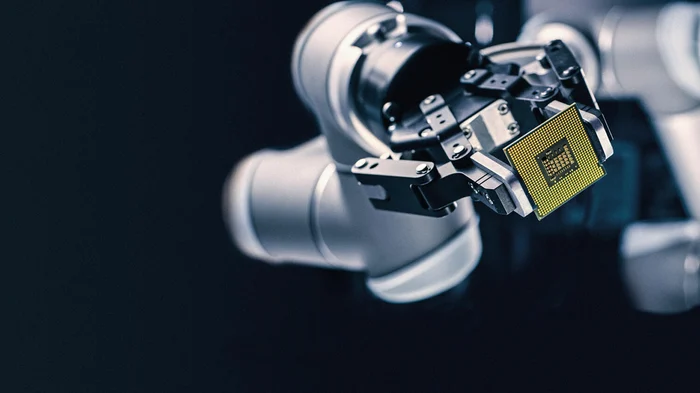Fix Ubuntu 'Reset System' Issue
In case you are encountering a “Reset System” boot loop issue after installing the Ubuntu 20 or 22 here are some troubleshooting steps to help you resolve this issue.
Reset System Issue
The Reset System boot loop is a problem where the system continuously restarts, never fully booting into Ubuntu. This can be caused by various factors, such as incorrect boot settings, conflicts with the BIOS, or issues with the boot files themselves.
The BIOS is configured to boot in Native UEFI mode, without CSM and Secure Boot is disabled.
After installation, Ubuntu does not start automatically: the message Reset System is shown, and restarts the System. By pressing ESC immediately after turning it on and then F9, a boot menu is shown, from which you can choose "ubuntu": but the same issue repeats. If "ubuntu" is not shown, you can choose "boot from an image file" and then use the navigation controls to choose the hard disk, then EFI/ubuntu/grubx64.efi (or EFI/ubuntu/shimx64.efi).
Workarounds
Relocate the Grub Loader
- Follow the suggestions given in the release notes and copy
/boot/efi/EFI/ubuntu/grubx64.efior/boot/efi/boot/efi/EFI/ubuntu/shimx64.efito/boot/efi/EFI/BOOT/bootx64.efi. - This step must be repeated whenever you upgrade the Grub package.
Customized Boot
- In the HP BIOS setup program, check the customized boot option. Then, go to Define customized boot option, switch it to Add rather than Delete, and type in the following path:
EFI\ubuntu\grubx64.efi(orEFI\ubuntu\shimx64.efi). - Change the UEFI boot order so that the customized boot option is above the OS Boot Manager option.
MultiBoot Delay
- In BIOS setup put in a 5 or more seconds delay for the MultiBoot Express menu.
- When you switch on your notebook, you'll have 5 (or more) seconds to choose "Ubuntu" among the possible boot options (it should be the last one).
- However, if you don't select anything, the default start sequence is taken and the "no bootable image found" message is shown.
Check Your Boot Settings
- The first step in resolving the boot loop issue is to check your system’s boot settings.
- Some users have found success by switching from legacy boot to EFI (Extensible Firmware Interface) boot and enabling secure boot in their BIOS settings.
Switch to EFI Boot and Enable Secure Boot
- Restart your computer and enter the BIOS settings. This is usually done by pressing a specific key (such as F2, F10, or Del) during startup.
- Once in the BIOS settings, navigate to the Boot tab.
- Change the boot mode from legacy to EFI.
- Enable the Secure Boot option.
- Save your changes and exit the BIOS.
After making these changes, reinstall Ubuntu and manually select the appropriate boot file in the BIOS. This should resolve the boot loop issue.
Disable Fast Boot
On certain systems, particularly those from HP, disabling “fast boot” in the BIOS has resolved the boot loop issue.
- Enter the BIOS settings during startup.
- Navigate to the Boot or Advanced tab.
- Locate the Fast Boot option and disable it.
- Save your changes and exit the BIOS.
Modify Boot Options
In some cases, the system may be attempting to boot from the wrong location, causing the boot loop. To resolve this, you can define a customized boot option in the BIOS, specifying the correct path to the EFI file.
- Enter the BIOS settings during startup.
- Navigate to the Boot tab.
- Create a new boot option.
- Specify the correct path to the EFI file, which is usually
\EFI\ubuntu\grubx64.efi. - Save your changes and exit the BIOS.
Remove Conflicting Files
In one case, a user discovered that the fbx64.efi file installed by grub-install in Ubuntu 22.04 was causing the “Reset System” issue. By removing this file from the /EFI/BOOT/ directory, the UEFI secure boot started working correctly.
- Boot your system using a Live USB or DVD.
- Open a terminal.
- Mount the EFI partition using the command
sudo mount /dev/sda1 /mnt. Replace/dev/sda1with the actual location of your EFI partition. - Navigate to the
/EFI/BOOT/directory using the commandcd /mnt/EFI/BOOT/. - Remove the
fbx64.efifile using the commandsudo rm fbx64.efi. - Reboot your system.
Please note that these solutions may not work for everyone, as the underlying cause of the boot loop can vary.
Notes
- The OS Boot Manager option, which has the maximum priority by default and which cannot be disabled at all, seems to expect the O.S. boot manager to be at
EFI/BOOT/boox64.efi. I couldn't find a way to prevent this, apart from configuring a "customized boot" option and giving it a higher priority. The "OS Boot Manager" option cannot be disabled. - The priority of the "ubuntu" entry cannot be changed in the UEFI Boot Order options, so I can't give it a higher priority than "OS Boot Manager". The only options available for the UEFI Boot Order are the standard ones (O.S. Boot Manager, boot from optical disk, boot from USB device, boot from IPv4 network, boot from IPv6 network, customized boot).
- If the "ubuntu" entry is not shown in the BIOS boot menu which opens by pressing ESC+F9, a
sudo update-grubis not enough. You should also do:sudo efibootmgr -c -w -l \\EFI\\ubuntu\\shimx64.efi -L "ubuntu" -p 1 -d /dev/sda
More:
If more than one "Ubuntu" entry is shown in the BIOS boot menu which opens by pressing ESC+F9 you might be confused as to which one is the latest boot loader. To clean the situation, do this:
- Enter the HP BIOS setup
ESC+F10 - Switch boot mode from Native UEFI to Legacy
- Exit saving changes
- Re-enter the HP BIOS setup
ESC+F10 - Switch boot mode from Legacy to Native UEFI
- Exit saving changes
- Enter the HP BIOS Boot menu
ESC+F9, choose to boot from the EFI image file (all "ubuntu" entries should be missing now), and chooseshimx64.efiorgrubx64.efi, as described above
The overall user experience is very bad. A lot of time goes into understanding how the whole thing works. But, thanks to the help of Mauro user, in the Launchpad forums, things were explained better. The workaround given in the release notes which seems to apply to VirtualBox only is not 100% correct and might not be the best solution.
There should be a way to make things better. The "customized boot" workaround is better, and it shouldn't need to be applied again when Grub is upgraded, unless the boot image file name changes, but the HP BIOS UI to enable this is quite abstruse, especially the Add/Delete step. Also, the "ubuntu" EFI boot entry can be created multiple times in some cases although efibootmgr -v shows it only once.
Ref: https://devicetests.com/fix-ubuntu-2204-reset-system-boot-loop
Ref: https://bugs.launchpad.net/linuxmint/+bug/1309395



Top comments (0)